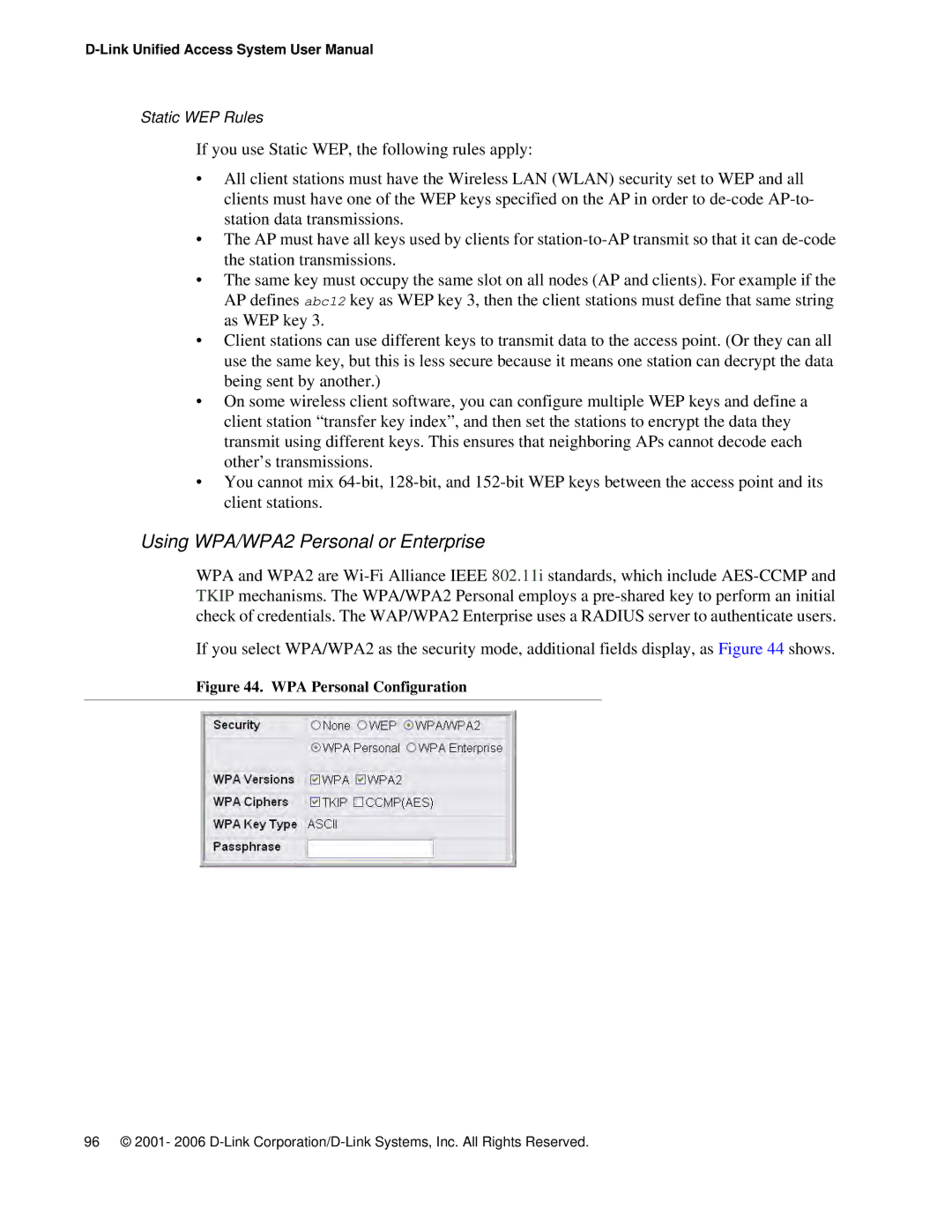
Static WEP Rules
If you use Static WEP, the following rules apply:
•All client stations must have the Wireless LAN (WLAN) security set to WEP and all clients must have one of the WEP keys specified on the AP in order to
•The AP must have all keys used by clients for
•The same key must occupy the same slot on all nodes (AP and clients). For example if the AP defines abc12 key as WEP key 3, then the client stations must define that same string as WEP key 3.
•Client stations can use different keys to transmit data to the access point. (Or they can all use the same key, but this is less secure because it means one station can decrypt the data being sent by another.)
•On some wireless client software, you can configure multiple WEP keys and define a client station “transfer key index”, and then set the stations to encrypt the data they transmit using different keys. This ensures that neighboring APs cannot decode each other’s transmissions.
•You cannot mix
Using WPA/WPA2 Personal or Enterprise
WPA and WPA2 are
If you select WPA/WPA2 as the security mode, additional fields display, as Figure 44 shows.
Figure 44. WPA Personal Configuration
96 © 2001- 2006
